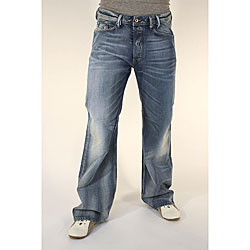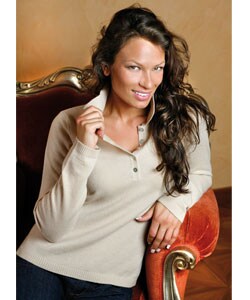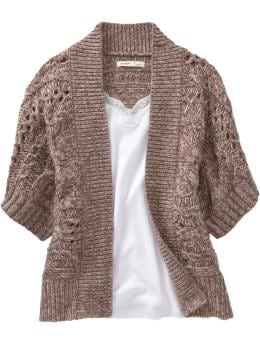No matter what the season is, you need women's coats to look stylish and stay warm and dry. There's no need to stick to your boring women's outerwear when you can purchase sleek women's leather coats, women's parkas and other stylish women's winter coats. Read on for the top 5 coats for women throughout the year.
Best Women's Coats:
1. Warm winter coat. If you live in an area that experiences plenty of snowfall and frigid temperatures, you need women's winter coats that are durable and extra warm. Look for women's parkas filled with down feathers and lined with fleece for lightweight warmth or purchase women's wool coats that zip or button up to protect you from chilly winds. Both women's parkas and women's wool coats are available with hoods for extra protection, especially when it's raining or snowing.
2. Pea coat. When you want stylish coats that aren't as thick or bulky as winter coats for women, try women's pea coats. With single- or double-breasted styles available, women's pea coats are versatile and classic. Look for a cut that includes slant pockets, a hood and toggle embellishments for an updated look.
3. Dress coat. Every woman needs a dressy coat or jacket to wear with a nice pantsuit or dress. Women's long coats made of wool or cashmere are always in style and keep you warm while you attend a fancy event. If you're petite or are worried about these women's coats overwhelming your frame, look for women's long coats that hit at the knee or extend no longer than mid-calf.
4. Trench coat. Essential in rainy climates, women's trench coats are flattering on women of all shapes and sizes, and they come in various lengths and styles. Look for women's trench coats that fall to the hip for a more modern look or buy coats that extend to the knee for a style you can wear with jeans, trousers and pencil skirts, especially at the office.
5. Leather coat. Among the most classic wardrobe pieces you can own are women's leather coats. You're not limited to a simple black leather style, either; try women's leather coats made of patent leather, lambskin, distressed leather or suede for a different look. Women's outerwear in tan, caramel, bronze or beige is unexpected and will allow you to stand out in the crowd.
Thursday, November 11, 2010
Wednesday, November 10, 2010
Men's Jeans Buying Guide
Jeans are an essential part of every man's wardrobe. In fact, the average American owns at least seven pairs. Because men's jeans are such a clothing staple, it's crucial to find the style that works for you. Unfortunately, finding jeans that fit your style, size and price range can be challenging. Fortunately, this men's jeans buying guide is here to educate you on the differences in jeans. Soon, you'll know how to buy jeans that don't just fit your inseam but your lifestyle, too.
Picking Different Denim Washes:
1. Washed denim. Jeans are produced from two basic denim types. Washed denim is the most popular variety and accounts for the vast majority of jeans in production. When denim is created, it is colored with dark shades of dye. After constructing a pair of jeans, a manufacturer will wash them in order to rinse away the excess dye left over from the denim's creation.
2. Raw denim. Raw denim jeans are created from material that is dyed and left unwashed after production. This gives jeans a dark look that will fade naturally, creating a look of genuine distress created by the wearer's own body. Raw denim is a favorite among many fashion-conscious consumers, and jeans cut from it are often more expensive than those constructed from washed denim.
3. Acid wash. Acid-wash jeans have had a rollercoaster of a time in the fashion world. At points considered the peak of chic and at other times looked at as a complete humiliation for the person seen in them, acid-wash jeans have seen their share of abuse. However, if you're brave, a pair of acid-wash jeans can really shine when combined with a simple, solid-colored short-sleeved shirt.
4. Dirty wash. Jeans constructed from denim with a dirty wash are designed to have a well-worn look. This wash will make a pair of blue jeans appear to have been used, and used hard. Dirty-washed denim combines dark blues with slight yellow or brown tinting, creating distressed jeans with a worn-in appearance.
5. Stonewash. Stonewashing is one of the most popular finishes for denim jeans. This classic wash is a vital part of every guy's casual apparel collection. Manufacturers use one of two techniques to reach the traditional blue expected of stonewashed jeans. The old-fashioned way is to utilize actual stones, but many denim jeans manufacturers now use chemicals to achieve a similar effect. Either way, stonewashed jeans will give you a classic, casual look.
6. Vintage wash. Nothing beats the look of a pair of your favorite worn-in jeans. Of course, wearing in a pair of jeans can take years, so why not cheat a bit? Distressed jeans are created with a vintage wash, giving them the slight look of wear that everyone loves. This sort of wash will go with a large variety of shirts, but try something like a retro-style long sleeved shirt to accentuate this wash.
Fit In with a Properly Fitting Jean:
If the jean fits, wear it. But if it doesn't, well, don't. Nothing can drag your style down like an ill-fitting pair of jeans. Read the Overstock.com Men's Measurement Guide for tips on finding your measurements. Then, take a look at the Overstock.com sizing chart to ensure a terrific fit.
Cuts
1. Bootcut. Bootcut jeans are the perfect cut for any guy hoping to look fashionable without looking outrageous. This slim cut fits closely (but not tightly) with a slight flare towards the leg opening. Bootcut jeans make sense for most body shapes, too, because they balance the body well.
2. Relaxed fit. Relaxed-fit jeans, which are loosely cut from waist to leg opening, are great for heavier men. The roomier shape of these blue jeans won't accentuate curves and bulges like other cuts will. Thin guys should avoid relaxed-fit jeans, as this cut can look loose and sloppy on skinny legs.
3. Skinny. Skinny jeans are a risky bet for many men, but they have the potential to look hip on the right guy. The skinny jeans club is fairly exclusive, as this ultra-tight fitting cut can make average-to-heavy body types look even larger. This cut should be reserved for the twiggy body shape, which allows skinny jeans to flatter a thin figure. Try this cut with a trendy vintage shoe to complete the look.
4. Slim fit. For those who want the hipster style of skinny jeans but don't make the cut weight-wise, there are slim-fit jeans. This cut of jean is tapered in a similar style to skinny jeans but not to the form-fitting extreme. With slim-fit jeans, you get the best of both worlds: fashion-forward looks and comfort.
5. Straight cut. Straight-leg jeans are the most discreet cut you'll find. Neither tapered nor excessively loose, this conservative style is ideal for those who want their jeans to be simple and classic.
Rises
1. Low-rise. Low-rise jeans have the smallest space between crotch and waist. This rise of jeans generally sits a few inches below the belly button, so make sure to wear a shirt of appropriate length to avoid exposing your midsection. Also keep in mind that low-rise jeans tend to fit tightly around the belly area, which may not be comfortable if you have a curvy stomach.
2. Medium-rise. If you don't feel comfortable in the hip-hugging scoop of low-rise jeans but want to maintain a trendy look, think about medium-rise jeans. The room between waist and crotch on medium-rise jeans isn't small, but it doesn't extend to the rib cage, either.
3. High-waisted. High-waisted jeans are a terrific choice for heavier men with fuller stomachs. The rise is enough to conceal the extra pounds that would be exposed in low- and medium-rise jeans.
Picking Different Denim Washes:
1. Washed denim. Jeans are produced from two basic denim types. Washed denim is the most popular variety and accounts for the vast majority of jeans in production. When denim is created, it is colored with dark shades of dye. After constructing a pair of jeans, a manufacturer will wash them in order to rinse away the excess dye left over from the denim's creation.
2. Raw denim. Raw denim jeans are created from material that is dyed and left unwashed after production. This gives jeans a dark look that will fade naturally, creating a look of genuine distress created by the wearer's own body. Raw denim is a favorite among many fashion-conscious consumers, and jeans cut from it are often more expensive than those constructed from washed denim.
3. Acid wash. Acid-wash jeans have had a rollercoaster of a time in the fashion world. At points considered the peak of chic and at other times looked at as a complete humiliation for the person seen in them, acid-wash jeans have seen their share of abuse. However, if you're brave, a pair of acid-wash jeans can really shine when combined with a simple, solid-colored short-sleeved shirt.
4. Dirty wash. Jeans constructed from denim with a dirty wash are designed to have a well-worn look. This wash will make a pair of blue jeans appear to have been used, and used hard. Dirty-washed denim combines dark blues with slight yellow or brown tinting, creating distressed jeans with a worn-in appearance.
5. Stonewash. Stonewashing is one of the most popular finishes for denim jeans. This classic wash is a vital part of every guy's casual apparel collection. Manufacturers use one of two techniques to reach the traditional blue expected of stonewashed jeans. The old-fashioned way is to utilize actual stones, but many denim jeans manufacturers now use chemicals to achieve a similar effect. Either way, stonewashed jeans will give you a classic, casual look.
6. Vintage wash. Nothing beats the look of a pair of your favorite worn-in jeans. Of course, wearing in a pair of jeans can take years, so why not cheat a bit? Distressed jeans are created with a vintage wash, giving them the slight look of wear that everyone loves. This sort of wash will go with a large variety of shirts, but try something like a retro-style long sleeved shirt to accentuate this wash.
Fit In with a Properly Fitting Jean:
If the jean fits, wear it. But if it doesn't, well, don't. Nothing can drag your style down like an ill-fitting pair of jeans. Read the Overstock.com Men's Measurement Guide for tips on finding your measurements. Then, take a look at the Overstock.com sizing chart to ensure a terrific fit.
Cuts
1. Bootcut. Bootcut jeans are the perfect cut for any guy hoping to look fashionable without looking outrageous. This slim cut fits closely (but not tightly) with a slight flare towards the leg opening. Bootcut jeans make sense for most body shapes, too, because they balance the body well.
2. Relaxed fit. Relaxed-fit jeans, which are loosely cut from waist to leg opening, are great for heavier men. The roomier shape of these blue jeans won't accentuate curves and bulges like other cuts will. Thin guys should avoid relaxed-fit jeans, as this cut can look loose and sloppy on skinny legs.
3. Skinny. Skinny jeans are a risky bet for many men, but they have the potential to look hip on the right guy. The skinny jeans club is fairly exclusive, as this ultra-tight fitting cut can make average-to-heavy body types look even larger. This cut should be reserved for the twiggy body shape, which allows skinny jeans to flatter a thin figure. Try this cut with a trendy vintage shoe to complete the look.
4. Slim fit. For those who want the hipster style of skinny jeans but don't make the cut weight-wise, there are slim-fit jeans. This cut of jean is tapered in a similar style to skinny jeans but not to the form-fitting extreme. With slim-fit jeans, you get the best of both worlds: fashion-forward looks and comfort.
5. Straight cut. Straight-leg jeans are the most discreet cut you'll find. Neither tapered nor excessively loose, this conservative style is ideal for those who want their jeans to be simple and classic.
Rises
1. Low-rise. Low-rise jeans have the smallest space between crotch and waist. This rise of jeans generally sits a few inches below the belly button, so make sure to wear a shirt of appropriate length to avoid exposing your midsection. Also keep in mind that low-rise jeans tend to fit tightly around the belly area, which may not be comfortable if you have a curvy stomach.
2. Medium-rise. If you don't feel comfortable in the hip-hugging scoop of low-rise jeans but want to maintain a trendy look, think about medium-rise jeans. The room between waist and crotch on medium-rise jeans isn't small, but it doesn't extend to the rib cage, either.
3. High-waisted. High-waisted jeans are a terrific choice for heavier men with fuller stomachs. The rise is enough to conceal the extra pounds that would be exposed in low- and medium-rise jeans.
Thursday, November 4, 2010
How to Wear Heels Without Pain
Share
Woman wearing high heels
For many women, heels present a conundrum: fashion or comfort? Although high heels are undeniably stylish and add flair to countless outfits, they can cause pain and possible injury. Take time when buying high heels and search for quality shoes. When wearing your heels, choose your steps carefully and take care to treat your feet well.
Painlessly Wearing Heels:
1. Buy quality shoes. Cheap heels can be excruciating; when it comes to shoes, it always pays to invest in quality construction and materials. Look for a pair on which the heel is solidly attached to the center of the shoe backing. No matter the height, a well-made pair of heels should be stable. Consider also the quality of materials and look at the seams to be sure that they will not weaken. When in doubt, opt for established brands, so you can be certain that you are getting quality shoes.
2. Choose heels you will be able to walk in. Be realistic about your level of comfort while wearing heels. Look for shoes in which you will be able to navigate sidewalk cracks, potholes and bumps. Will you be able to jump over a puddle without twisting your ankle in platform heels? If you have weak ankles, look for lower heels to avoid injury. Likewise, if you are new to heels or notoriously clumsy, choose lower or thicker heels until you can gauge your ability to walk in different styles. Avoid stiletto heels until you are comfortable wearing smaller heels. And once you have the heels, practice walking around in them at home, up and down stairs, and for short distances.
3. Take a load off. To save your feet, remove them slightly from your heels when sitting down. Be careful not to take them off completely, or your feet can swell and cause you even more pain. Instead, slide your heel up and the ball of your foot back just enough to take off the pressure. This will provide some relief without allowing room for swelling. If you are sitting behind a desk or in an audience, this can be done unobtrusively. If you are sitting in front of people, bend your knees and cross your legs at the ankle before sliding your feet out of the heels.
4. Buy gel insoles. Anticipating the need for comfortable heels manufacturers of gel insoles have begun making products that fit heels. These insoles are narrower and shorter than those for other shoes, allowing them to be applied to the inside of heels without sticking out at the sides or either end. They generally use a mild adhesive to stick to the shoe and provide extra comfort and cushioning to protect your feet. Such insoles can be purchased for pumps or sandal-style heels.
5. Try to walk less. When wearing platform heels or stiletto heels, the easiest option to save your feet from pain is to walk as little as possible. Take taxis, park closer to your office and sit as often as possible. If you preserve your feet for the times you really need to walk, you will appear more poised and graceful; there is nothing graceful about limping from heel pain. For times when you can't avoid extensive walking, carry moleskin with an adhesive side and apply it to the inside of your shoes on areas that rub. This will prevent blisters and increase the comfort of your heels. You might also consider bringing a pair of flats or flip-flops to relieve your feet at the end of a day or during downtime.
Buy Heels
Woman wearing high heels
For many women, heels present a conundrum: fashion or comfort? Although high heels are undeniably stylish and add flair to countless outfits, they can cause pain and possible injury. Take time when buying high heels and search for quality shoes. When wearing your heels, choose your steps carefully and take care to treat your feet well.
Painlessly Wearing Heels:
1. Buy quality shoes. Cheap heels can be excruciating; when it comes to shoes, it always pays to invest in quality construction and materials. Look for a pair on which the heel is solidly attached to the center of the shoe backing. No matter the height, a well-made pair of heels should be stable. Consider also the quality of materials and look at the seams to be sure that they will not weaken. When in doubt, opt for established brands, so you can be certain that you are getting quality shoes.
2. Choose heels you will be able to walk in. Be realistic about your level of comfort while wearing heels. Look for shoes in which you will be able to navigate sidewalk cracks, potholes and bumps. Will you be able to jump over a puddle without twisting your ankle in platform heels? If you have weak ankles, look for lower heels to avoid injury. Likewise, if you are new to heels or notoriously clumsy, choose lower or thicker heels until you can gauge your ability to walk in different styles. Avoid stiletto heels until you are comfortable wearing smaller heels. And once you have the heels, practice walking around in them at home, up and down stairs, and for short distances.
3. Take a load off. To save your feet, remove them slightly from your heels when sitting down. Be careful not to take them off completely, or your feet can swell and cause you even more pain. Instead, slide your heel up and the ball of your foot back just enough to take off the pressure. This will provide some relief without allowing room for swelling. If you are sitting behind a desk or in an audience, this can be done unobtrusively. If you are sitting in front of people, bend your knees and cross your legs at the ankle before sliding your feet out of the heels.
4. Buy gel insoles. Anticipating the need for comfortable heels manufacturers of gel insoles have begun making products that fit heels. These insoles are narrower and shorter than those for other shoes, allowing them to be applied to the inside of heels without sticking out at the sides or either end. They generally use a mild adhesive to stick to the shoe and provide extra comfort and cushioning to protect your feet. Such insoles can be purchased for pumps or sandal-style heels.
5. Try to walk less. When wearing platform heels or stiletto heels, the easiest option to save your feet from pain is to walk as little as possible. Take taxis, park closer to your office and sit as often as possible. If you preserve your feet for the times you really need to walk, you will appear more poised and graceful; there is nothing graceful about limping from heel pain. For times when you can't avoid extensive walking, carry moleskin with an adhesive side and apply it to the inside of your shoes on areas that rub. This will prevent blisters and increase the comfort of your heels. You might also consider bringing a pair of flats or flip-flops to relieve your feet at the end of a day or during downtime.
Buy Heels
Wednesday, November 3, 2010
How to Care for Cashmere Sweaters
Things You Need:
* Mild soap
* Cold water
* Soft towel
* Tissue paper
Cashmere is a delicate wool knit that requires special handling and care to preserve the integrity of the fabric. Since cashmere sweaters can snag, absorb odors and attract dirt and stains relatively easily, it's important to clean and care for cashmere sweaters with mild cleaning products and find ways to protect this fine fabric. Follow these steps to care for cashmere sweaters.
Instructions:
1. Treat stains immediately with cold water and mild soap. Both men's and women's cashmere sweaters are meant to be hand-washed only; stains can be removed easily as soon as they appear. Gently rub the soap into the stain using a soft cloth that has been immersed in cold water.
2. Keep the cashmere as straight as possible when cleaning. Wringing or twisting cashmere sweaters while washing or rinsing can damage the delicate fibers, so it's important to lay the sweater out on a flat surface throughout the cleaning process.
3. Allow the cashmere sweater to air dry. Dry-cleaning processes or home dryers can be too harsh on cashmere fibers and put the sweater at risk for burning or losing its shape and form. Lay the sweater out on a clean and flat surface so that it can dry naturally.
4. Protect cashmere fibers when storing in a closet or drawer. Since cashmere is such a delicate fabric, you'll need to protect it from other fabrics and surfaces it comes into contact with. Use a piece of tissue paper to separate cashmere sweaters from other sweaters and clothes when stacked in an armoire.
5. Iron the sweater on the lowest setting. Cashmere sweaters can scorch easily when they come into contact with a hot iron, so remove wrinkles using only the lowest heat setting of the iron or steamer.
Tips:
1. Keep the sweater away from heat sources and direct sunlight when storing to protect the integrity of the fibers and preserve the sweater's color.
2. If you are washing the sweaters in a sink, make sure the sink is completely sanitized first or the cashmere fibers will absorb bacteria and odor.
3. Hanging a cashmere sweater can cause it to become misshapen and may break down the fibers in the shoulder and neck area of the sweater.
4. Cashmere absorbs water very easily, so larger garments, such as men's cashmere sweaters, will become very heavy and can be difficult to handle when wet.
5. Be careful while using deodorants, makeup and lotions, because these can stain or discolor cashmere.
View All Women's Cashmere Sweaters
* Mild soap
* Cold water
* Soft towel
* Tissue paper
Cashmere is a delicate wool knit that requires special handling and care to preserve the integrity of the fabric. Since cashmere sweaters can snag, absorb odors and attract dirt and stains relatively easily, it's important to clean and care for cashmere sweaters with mild cleaning products and find ways to protect this fine fabric. Follow these steps to care for cashmere sweaters.
Instructions:
1. Treat stains immediately with cold water and mild soap. Both men's and women's cashmere sweaters are meant to be hand-washed only; stains can be removed easily as soon as they appear. Gently rub the soap into the stain using a soft cloth that has been immersed in cold water.
2. Keep the cashmere as straight as possible when cleaning. Wringing or twisting cashmere sweaters while washing or rinsing can damage the delicate fibers, so it's important to lay the sweater out on a flat surface throughout the cleaning process.
3. Allow the cashmere sweater to air dry. Dry-cleaning processes or home dryers can be too harsh on cashmere fibers and put the sweater at risk for burning or losing its shape and form. Lay the sweater out on a clean and flat surface so that it can dry naturally.
4. Protect cashmere fibers when storing in a closet or drawer. Since cashmere is such a delicate fabric, you'll need to protect it from other fabrics and surfaces it comes into contact with. Use a piece of tissue paper to separate cashmere sweaters from other sweaters and clothes when stacked in an armoire.
5. Iron the sweater on the lowest setting. Cashmere sweaters can scorch easily when they come into contact with a hot iron, so remove wrinkles using only the lowest heat setting of the iron or steamer.
Tips:
1. Keep the sweater away from heat sources and direct sunlight when storing to protect the integrity of the fibers and preserve the sweater's color.
2. If you are washing the sweaters in a sink, make sure the sink is completely sanitized first or the cashmere fibers will absorb bacteria and odor.
3. Hanging a cashmere sweater can cause it to become misshapen and may break down the fibers in the shoulder and neck area of the sweater.
4. Cashmere absorbs water very easily, so larger garments, such as men's cashmere sweaters, will become very heavy and can be difficult to handle when wet.
5. Be careful while using deodorants, makeup and lotions, because these can stain or discolor cashmere.
View All Women's Cashmere Sweaters
Tuesday, November 2, 2010
Well its November......Big Things To Come
Well its November and the hustle and bustle begins.....The holidays are right around the corner. After Thanksgiving is Black Friday which starts off the holiday shopping season. Cyber Monday is the next big shopping day for the holiday shopping... Working for Overstock.com means the hustle and bustle comes in a big way. I hope you enjoy the countdown to Christmas and watch for our shopping deals!
Monday, November 1, 2010
My Faves Sweaters for the Day
Well the season is upon us and time to break out the sweaters. So with the weather changing I thought it was appropriate to share some of my favorite sweaters for the day. This sweater was so cute. I can see the outfit now sweater with skinny jeans and a dark pair of brown boots!
I also fell in love with this cashmere sweater I can just imagine sitting at home with the fireplace on lounging around wearing this sweater. However, you probably should dress it up and go out on the town with this sweater, but when I hear cashmere or any type of soft clothing this is what I think of and relax.
So I have give you a cute sweater, relaxing one now let me share with you a fun one? Why not right ? This sweater is cute and I could wear this anywhere. I am not exactly sure what color it is so I will say it is tan. However, it looks as though there may be a pink tint to it Either way I thought this sweater was adorable and I wanted to share it with you,
I also fell in love with this cashmere sweater I can just imagine sitting at home with the fireplace on lounging around wearing this sweater. However, you probably should dress it up and go out on the town with this sweater, but when I hear cashmere or any type of soft clothing this is what I think of and relax.
So I have give you a cute sweater, relaxing one now let me share with you a fun one? Why not right ? This sweater is cute and I could wear this anywhere. I am not exactly sure what color it is so I will say it is tan. However, it looks as though there may be a pink tint to it Either way I thought this sweater was adorable and I wanted to share it with you,
Subscribe to:
Posts (Atom)















